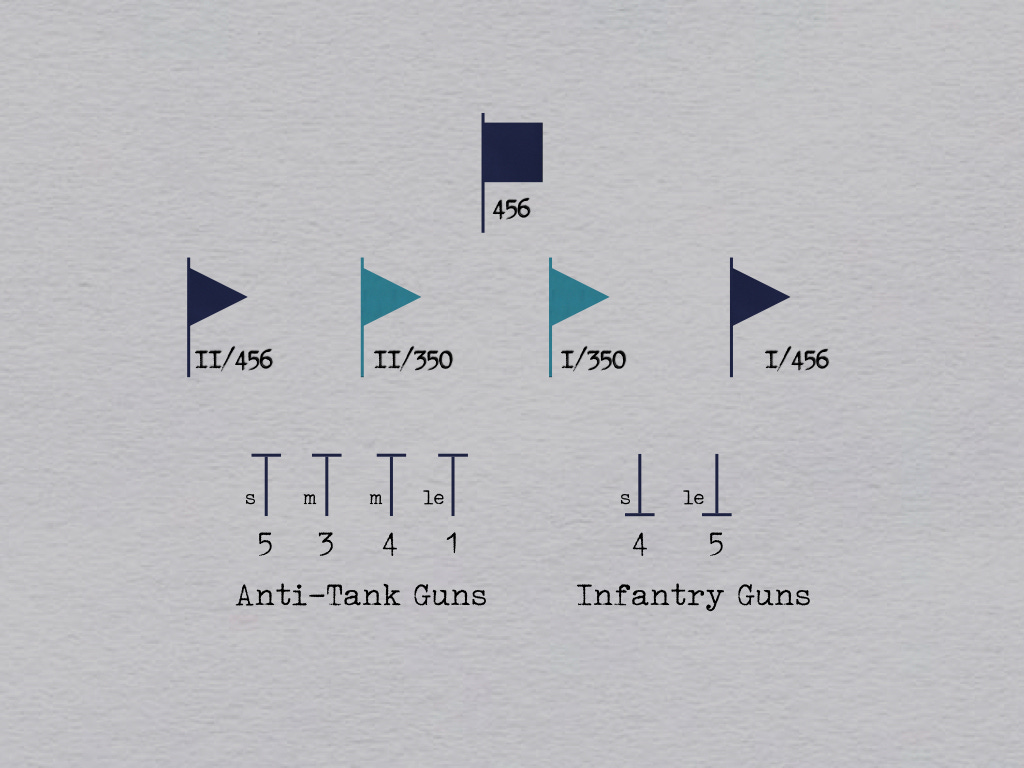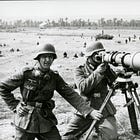A Division in the Defense (Part IV)
Despite the losses of the preceding months, the 456th Grenadier Regiment of 2 March 1944 had managed to retain both its basic structure and most of its heavy weapons. It was thus, in terms of people, weapons, and equipment, in much the same shape as the other organic infantry regiment of the 256th Infantry Division, the 481st Grenadier Regiment.
Each infantry regiment received a different mission. Where the 481st Grenadier regiment was charged with holding a wide sector, the 456th Grenadier Regiment defended a relatively narrow piece of ground. The 456th was thus in a position to lend one of its three battalions (III/456) to the 481st.
In partial compensation for the loss of a relatively strong battalion, the 456th Grenadier Regiment received the remnants of two battalions that had suffered heavy losses in recent combat. (One of these depleted units could muster 194 men. The other had been reduced to 97 men.)
In the view of the division commander, the sector held by the 456th Regiment invited attack by Soviet tanks. He thus reinforced it with two 75mm anti-tank guns and two 150mm heavy infantry infantry guns. The former, which the German Army classified as a “heavy anti-tank gun,” could reliably deal fatal blows to any tank in the Soviet arsenal. The latter, a weapon peculiar to the German Army, fired a shell comparable to that of a German 150mm howitzer, a Soviet 152mm howitzer, or an American 155mm howitzer.
All of the elements attached to the 456th Grenadier Regiment came from the 350th Grenadier Regiment. The latter regiment, which had spent most of the war as part of a rear-area security formation, occupied a small sector of its own within the zone defended by the 256th Infantry Division.
Sources: Barbara Selz Das Grüne Regiment. Der Weg der 256. Infanterie-Division aus der Sicht des Regiments 481 (Freiburg im Breisgau: Verlag Otto Kehrer, 1970)





